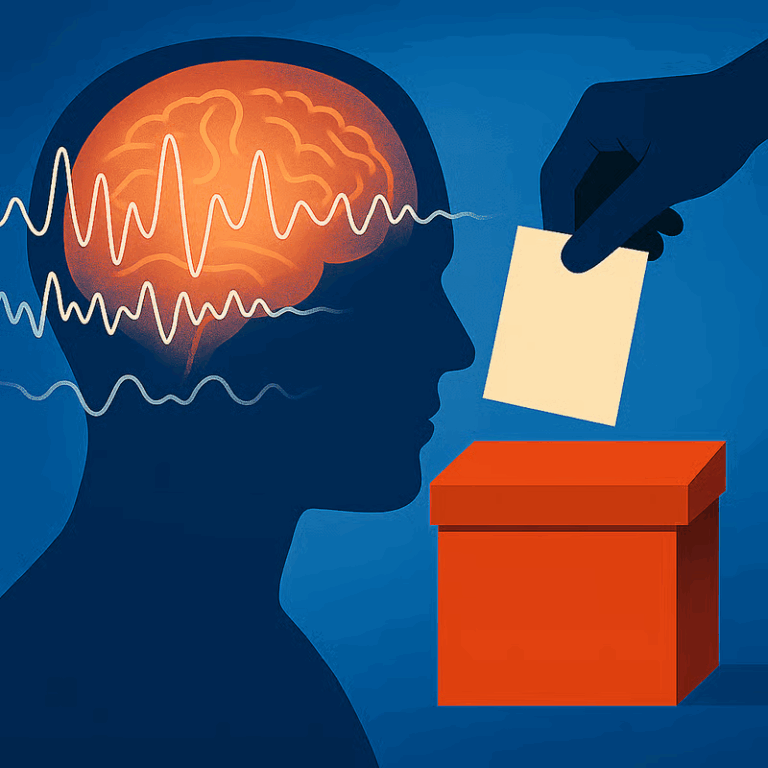
In the latest instalment of Campaign Lab’s Academic Series, Dr Emmanuel Mahieux presented intriguing research exploring a provocative question: can we predict voters’ intentions using brainwave activity?
Traditional political campaigns rely heavily on explicit measures such as polls and surveys to gauge voter intentions. However, these tools can often fall short, particularly among undecided voters who may lack strong political awareness or explicit preferences.
Emmanuel’s research delves into implicit measures of voter preferences, specifically using event-related potentials (ERPs) electrical signals from the brain as indicators. His study focused on the N400, an ERP that spikes approximately 400 milliseconds after exposure to words or statements that clash with one’s expectations or beliefs.
Emmanuel built on previous studies, notably Giulia Galli’s research around the 2016 EU referendum. Galli found that decided voters showed a strong N400 response to statements opposing their views. Remarkably, she also discovered that undecided voters displayed similar neural responses to one side, accurately predicting their eventual votes.
Emmanuel applied this methodology to the context of the 2022 US midterm elections in Texas. Participants read statements aligned with Democratic or Republican positions while their neural responses were measured. The findings were revealing:
Decided Democratic voters showed clear N400 responses to Republican statements, reflecting implicit disagreement.
Undecided voters who eventually supported Democrats exhibited even stronger N400 responses to Republican statements, suggesting implicit leanings even before conscious decision-making.
Interestingly, Republican participants did not demonstrate consistent N400 responses aligning with their explicit preferences, highlighting internal conflicts possibly driven by contemporary issues like abortion rights following Roe v. Wade’s reversal which occurred shortly before the midterms.
The study also compared these implicit neural indicators with traditional explicit measures (polling and surveys). While explicit measures predicted final voting choices more reliably, they failed to capture nuances of internal conflict revealed by the N400.
These findings suggest significant potential for using ERPs in understanding voter psychology, particularly identifying voters who might be internally conflicted despite outwardly stated preferences. Emmanuel cautions, however, that despite their potential, implicit measures like the N400 currently supplement rather than replace traditional polling methods.
Looking ahead, Emmanuel noted the rising trend of neuroscience consultancies advising political campaigns, particularly in the highly competitive and financially robust US electoral landscape.
In an era of escalating campaign strategies and polarization, insights from neuroscience could offer progressive campaigns a deeper, more nuanced understanding of voter behaviour.
If the cause of the results Emmanuel found were in fact an indicator of conflicted voters then N400 response could be a valuable tool to help find which way undecided voters are leaning and even to help test messaging.
Campaign Lab’s Academic Series continues next month with a presentation from Dr. Stephanie Luke on Labour’s response to Reform. Stay tuned for more insights connecting academic research with progressive campaigning.
——
